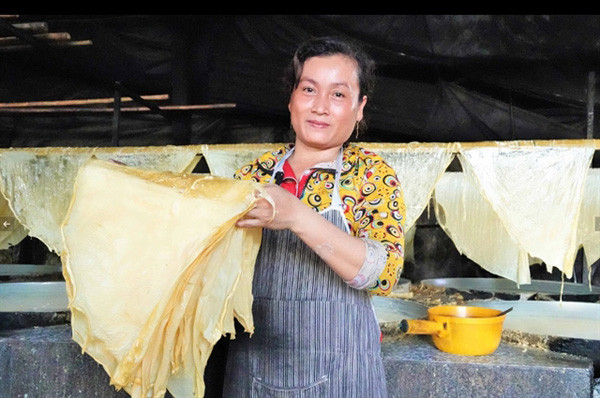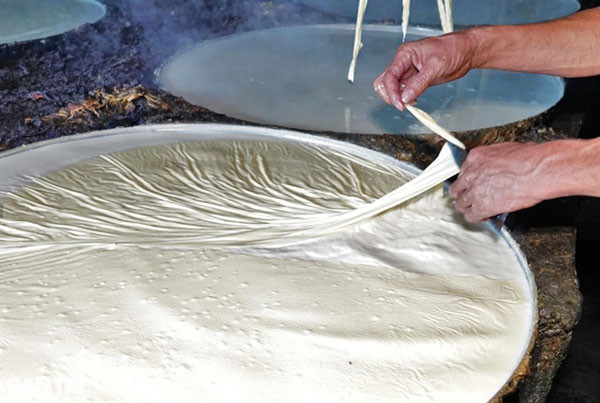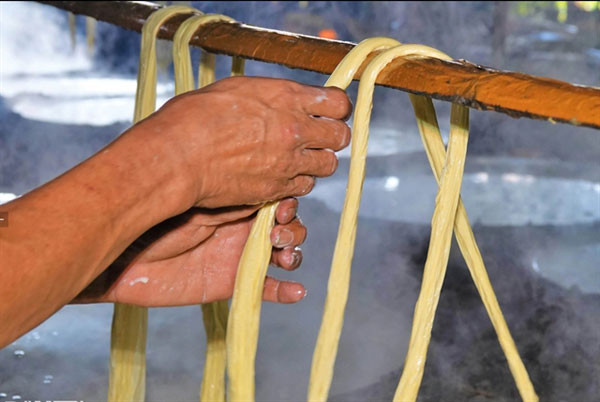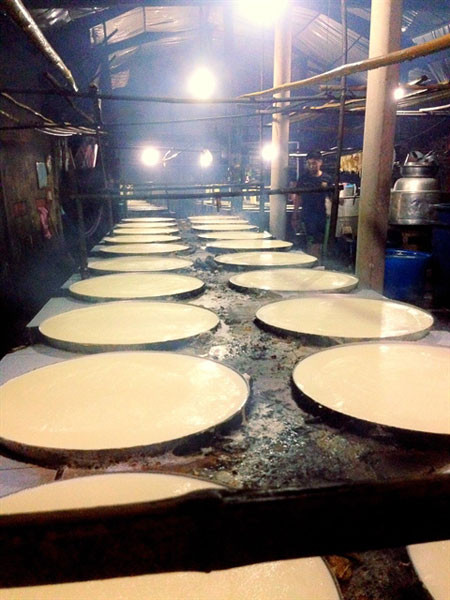
Many provinces in the Mekong Delta have craft villages making tofu skin or beancurd sheet, but the food product made in My Hoa Village, Binh Minh Town in Vinh Long Province, is a specialty, unique in taste.
The village is on the bank of the Cai Von River in My Hoa Commune. In the past, you could only reach the area by boat. Now you can get there by crossing the Tu Tai Bridge over the river.
Night or day, the village is always bustling, and the tofu skin here is golden, fragrant, crispy, and full of nutrients.
"My family's tofu skin making craft has been passed down from our ancestors for more than 70 years," Dinh Cong Hoang, a workshop owner, said.
"Although there have been ups and downs, the village still has 27 households with more than 200 workers producing about seven tonnes of tofu skin per day. The work not only brings economic value to the locals but contributes to the formation of the village's cultural characteristics."
Hoang's workshop is large, with about six rows of ovens, making hundreds of kilograms of tofu skin every day.

Preserving village culture
In the 18th and 19th centuries, social upheavals pushed many Chinese migrants to the south of Vietnam, bringing with them several traditional crafts to the new land. At that time, a man named Chau Xuong, his wife and two sons from Guangdong, China, migrated to the south and chose My Hoa to work as the first tofu skin makers.
The ancient craft was passed down by their family, but they hired some local residents to help. Gradually, the Vietnamese in the village embraced the Chinese tofu skin making and learnt the production secrets. A busy craft village was formed.
Little has changed in the processing steps and production tools. Machines have replaced some stages in the production process to meet increasing demand. However, the process mostly requires the skilful hands and the experience of workers.
According to Hoang, to get the product, first, soy milk is poured into an open shallow pan that is heated continuously with firewood or coal. When the soy milk boils, a rich, fatty film of coagulated proteins is formed on the surface of heated soy milk. The worker just lifts the sheet away and hangs it on a bamboo pole to dry. Normally, in every 25 minutes, a new beancurd sheet is formed and lifted away.

The soy milk boiling stage is critical because it determines the success or failure of the batch. In the past, the tofu skin makers mainly used straw; later, they burned rice husks, firewood and coal instead.
Tofu skin in My Hoa is made from clean soybeans and does not use chemicals. Natural purity is a factor that defines the village's brand. The tofu skin here has been recognised as a 3-star OCOP (One Commune – One Product) product in the province.
The tofu skin craft in My Hoa Village has also been recognised by the culture ministry as a National Intangible Cultural Heritage.
"My Hoa tofu skin named as a national intangible cultural heritage is a joy, honour and pride of the craft village," Nguyen Thanh Can, chairman of Binh Minh Town's People's Committee, said.
"To preserve and promote this traditional craft village, the locality has determined that it is necessary to deploy many support solutions to improve economic efficiency for the local people to maintain and expand this profession."

Meanwhile, Nguyen Xuan Hoanh, deputy director of Vinh Long Province's Department of Culture, Sports and Tourism, said the province has 23 traditional craft villages, including My Hoa tofu skin craft village. Its products are very diverse and famous throughout the region, especially for vegetarians, and as gifts for tourists.
"As a national intangible cultural heritage, the craft village is the pride of its artisans and local people. It brings opportunities to promote and develop the village and attracts tourists to Vinh Long," Hoanh said.
Source: Vietnam News